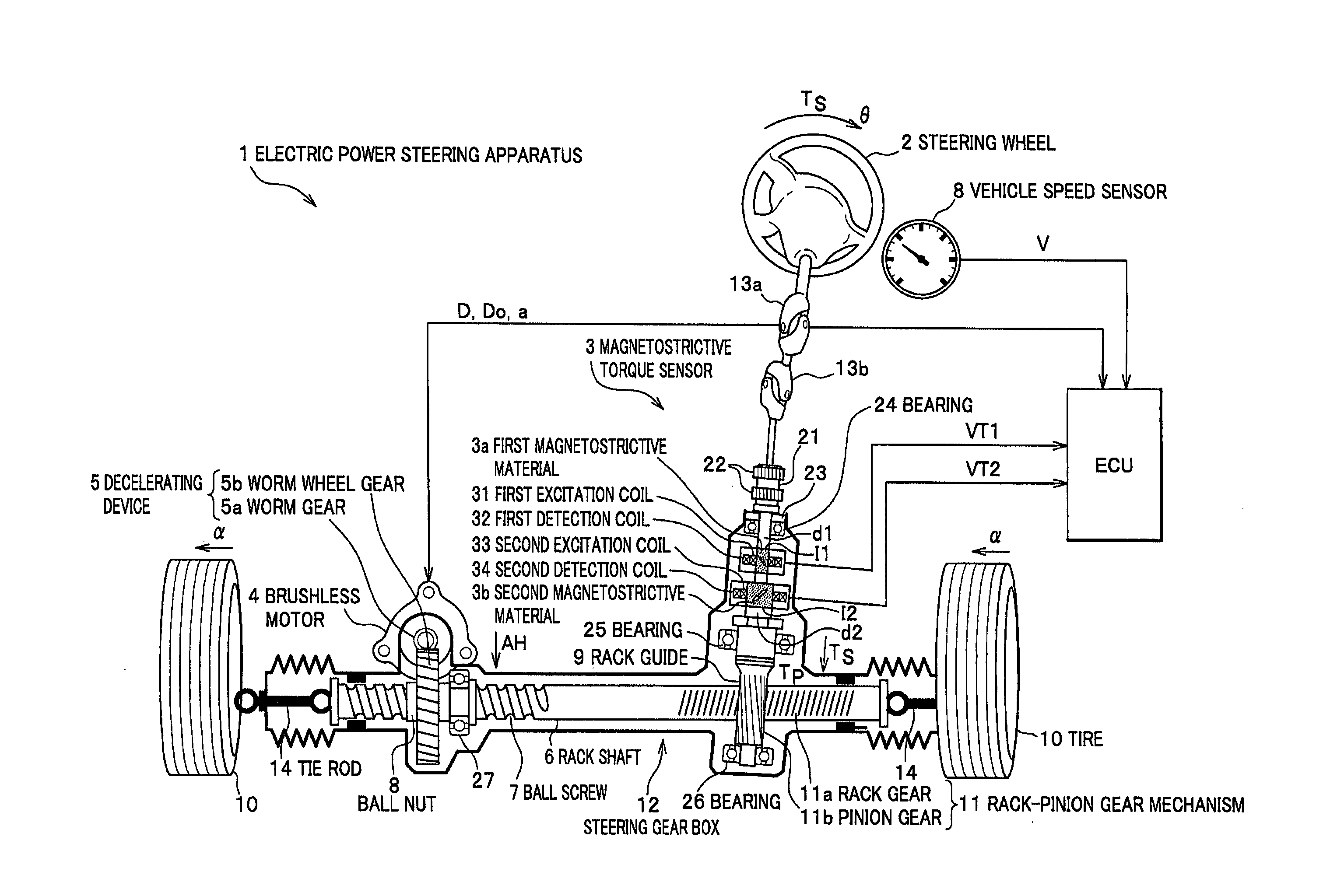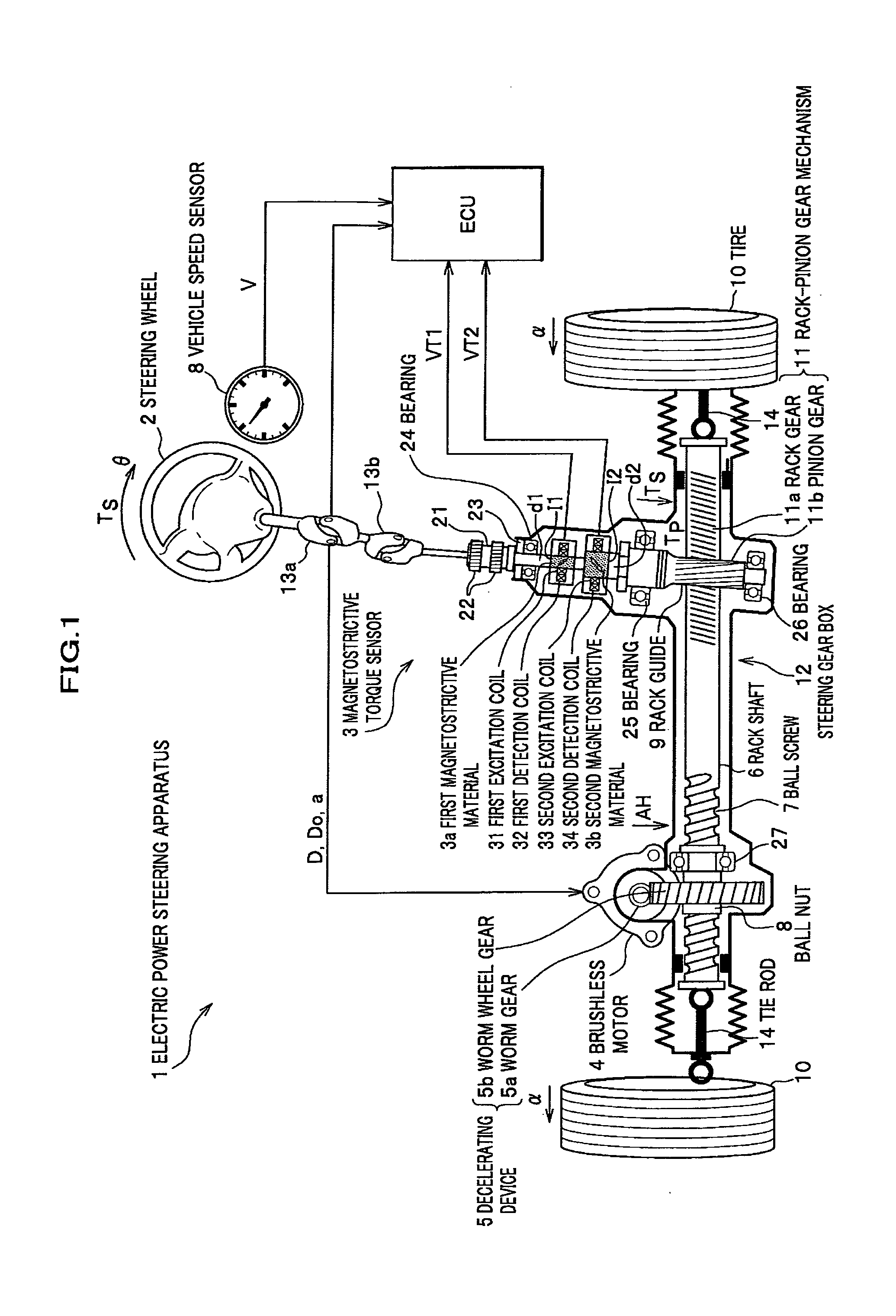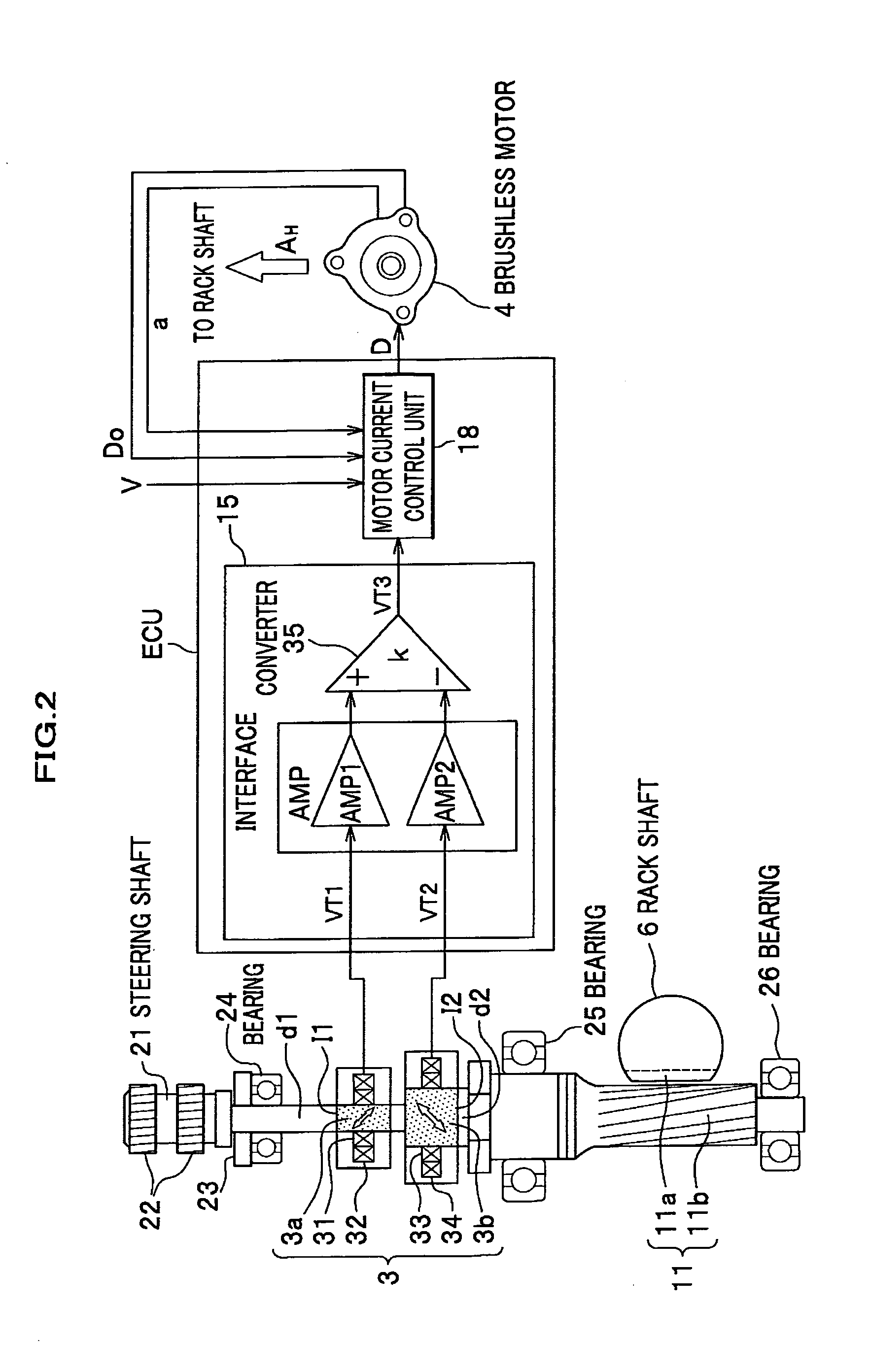Magnetostrictive torque sensor and electric power steering apparatus
- Summary
- Abstract
- Description
- Claims
- Application Information
AI Technical Summary
Benefits of technology
Problems solved by technology
Method used
Image
Examples
first embodiment
[0031]FIG. 1 shows an entire configuration of an electric power steering apparatus (EPS) 1 according to a first embodiment of the present invention. A steering wheel 2 is coupled to the upper end of a steering shaft 21 via universal joints 13a, 13b. A pinion gear 11b is secured to the lower end of the steering shaft 21. The pinion gear 11b engages with a rack gear 11a, and the rack gear 11a and the pinion gear 11b form a rack-pinion gear mechanism 11. The rack-pinion gear mechanism 11 converts steering torque Ts of the steering shaft 21 into thrust of an axis direction of a rack shaft 6. The rack gear 11a is made by cutting into the rack shaft 6.
[0032]A ball screw 7 is also made by cutting into the rack shaft 6, and a ball nut 8 is provided on the inner side of a worm wheel gear 5b. The rack shaft 6 and the worm wheel gear 5b engage the ball nut 8 via a plurality of re-circulating balls (not shown). The outer teeth of the worm wheel gear 5b engage a worm gear 5a. The worm gear 5a is...
second embodiment
[0058]FIG. 6A is a diagram of the configuration of a magnetostrictive torque sensor according to a second embodiment of the present invention. The magnetostrictive torque sensor of the second embodiment differs from the magnetostrictive torque sensor of the first embodiment in that not both ends of the rotating shaft 21 are rotatably supported, but the upper end of the rotating shaft 21 is an open end, specifically, in that the bearing 24 of FIG. 3 is omitted. However, the upper end of the rotating shaft 21 is not actually a completely open end, but the steering wheel 2 is coupled to the upper end, and a force G from the steering wheel 2 acts on the upper end of the rotating shaft 21 via the universal joints 13a, 13b when strongly turning the steering wheel as in performing stationary steering, e.g., while driving the vehicle into the garage.
[0059]The rotating shaft 21 of the magnetostrictive torque sensor 3 is rotatably supported by the bearings 25, 26. The first magnetostrictive m...
third embodiment
[0064]FIG. 8 is a diagram of the configuration of an electric power steering apparatus having a magnetostrictive torque sensor according to a third embodiment of the present invention. The electric power steering apparatus of the third embodiment differs from the electric power steering apparatus of the first embodiment in that instead of the rack-pinion gear mechanism 11, the decelerating device 5 is provided in between the bearings 25, 26. Consequently, the rack-pinion gear mechanism 11 is provided below the bearing 26 as similar to the first embodiment, but the mechanism 11 is located also below the bearing 25. The pinion gear 11b is rotatably supported by a new bearing 26a. Further, the universal joints 13a, 13b and the tightener 22 have been moved from above the bearing 24 to below the bearing 26. According to the third embodiment, the auxiliary torque AH can be applied not to the rack shaft 6 but directly to the rotating shaft 21. By this means, the force F as shown in FIG. 3A...
PUM
 Login to View More
Login to View More Abstract
Description
Claims
Application Information
 Login to View More
Login to View More - R&D
- Intellectual Property
- Life Sciences
- Materials
- Tech Scout
- Unparalleled Data Quality
- Higher Quality Content
- 60% Fewer Hallucinations
Browse by: Latest US Patents, China's latest patents, Technical Efficacy Thesaurus, Application Domain, Technology Topic, Popular Technical Reports.
© 2025 PatSnap. All rights reserved.Legal|Privacy policy|Modern Slavery Act Transparency Statement|Sitemap|About US| Contact US: help@patsnap.com



